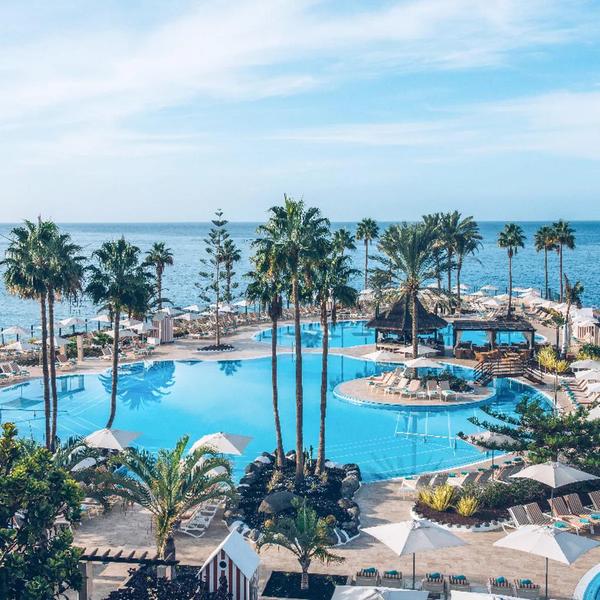
Social Media Filters, Feminism and Plastic Surgery - ChapterZ Magazine
Through old forms of media like billboards, magazines and newspapers, women were forced to compare themselves with others and cultivate their own beauty to fit a standard

The pressure is on to adopt eco-friendly business practices. We’re living in a time of environmental uncertainty, now more than ever companies are expected to align their business strategies with sustainability. But for print-heavy marketing campaigns, how is that possible?
Here are some top tips to achieve sustainability in your marketing efforts:
1. Utilising printing practices
For the companies that cant go fully digital, it’s important to properly utilise the printing practices you currently have. One way of doing this is by printing on demand. This means using printing materials only when there is a demand for them, e.g. only fulfilling specific orders. Not only does this method minimise product waste but it also prevents unnecessary stockpiling. You may think you’re already adopting this practice but you could be surprised when you delve into the materials wasted daily. This practice of printing on demand stops any overproduction that would automatically fall to waste and reduces inventory to only what’s needed.
2. Sustainable ink
When looking to make your printing campaigns more sustainable, the most obvious choice is to swap out for eco-friendly alternatives. Though these actions feel small, they have a huge impact.
Ink seems like a very small cog in the system but there are alternatives to traditional ink which could greatly impact your carbon footprint. Soy based inks are the most popular swap, these are made from soybean oil and are biodegradable. There are also vegetable based inks which are typically non toxic and easily recyclable. Finally there are the lesser known UV Curable inks, these are energy efficient and typically solvent based. These inks tend to dry quickly when exposed to UV light. Each ink will benefit in different ways but it’s important to consider a change away from traditional inks as these contain damaging chemicals that can be released into the environment.
3. Eco friendly materials
Switching out your materials seems to be the most obvious solution but it shouldn’t be diminished in its importance. Something as simple as switching to recycled paper can make a huge difference. The production of traditional paper contributes to air, water and land pollution, so it’s critical to think about alternatives. As well as commonly used recycled paper, there are alternatives such as Bio-based and Tree-free papers. These are typically made from plant fibres such as hemp or bamboo and they produce a lower carbon footprint compared to tree based papers because they use less water for production.
4. Different printer types
As well as the materials we use, the printers are equally as important in the fight against climate change. Inkjet printers for example are usually seen as more environmentally friendly than laser, they use less energy during printing and typically contain cartridges that can be recycled. Digital presses such as digital offset are another option, these digital printing presses use less energy and also produce less waste compared to traditional print pressing. They encourage on-demand printing which discourages excess print and paper waste. Eco-Solvent printers are another alternative, they use eco-friendly inks and are usually used more for larger print jobs such as outdoor signs and banners. Finally what’s known as Energy Efficient printers, these typically consume less power during their operation and meet energy standard certifications. This is because they’re usually programmed to use sleep modes and automatic shutdown features when idle, this minimises energy consumption.
5. Thinking about waste
Whilst it may not feel like it, waste is one of the most important things to consider when looking to make a print campaign sustainable. Companies can adopt various practices to understand waste management and strive for lower emissions. Basic recycling programmes are a start, look at how you typically discard materials such as cardboard, ink, paper. Implement stricter rules around discarding of such materials or set up designated recycling areas. Consider your current strategies around the disposal of ink. Traditional ink can be extremely damaging to the environment if not disposed of properly. Organise correct storage of inks, cleaning materials and solvents to ensure they’re discarded efficiently. Even look into ink and printer cartridge recycling programmes in and around the country that could help you.
When making these eco-friendly swaps, think about where the energy inefficient equipment may go, are there recycling schemes that can help with this? You could also consider alternatives such as energy efficient LED lights, heating, air conditioning and ventilation.
Preparing for the future
We’re only just beginning to lift the lid on the environmental impacts of traditional printing practices. We know that an over reliance on paper can lead to deforestation, an excess amount of water and chemicals are used in this process and this can pollute our environment. We also know that improper management of waste can lead to landfill pollution. So adopting these practices is now more crucial than ever.
There are so many impactful and sustainable alternatives out there that could really change the game when it comes to print marketing campaigns. By thinking about sustainable swaps, you can encourage innovation and creativity and set yourselves apart from competitors. You don’t have to stop producing great print campaigns, it’s just about considering the impacts your company can make and experimenting with sustainable alternatives. You can start small, but the impacts will be mighty.
I hope these tips were helpful. At Raccoon, we’re passionate about printing and we want to help you produce great things. We believe there is still so much life in the printing business, we just want to help other marketers step into the future with sustainability and vision.
Your carbon footprint thanks you!
Surrounded by beautiful sandy coves and nestled within incredible rustic landscapes, Kefalonia or Cephalonia to locals, is a true hidden gem. Overlooking a harbour steeped in history, Kefalonia boasts more charm than your typical Greek island. Upon arrival, you’ll be welcomed with open arms, the community is warm and hospitable.
There’s plenty to see on this beautiful island. The memorable Myrtos Beach, boasting turquoise waters edged by gorgeous rustic cliffs is a bucket list location for beach lovers and budding photographers. Explore the enchanting mystery of Melissani Cave, one of the most popular tourist spots in Kefalonia and for good reason. This cave is astonishingly beautiful, with crystal clear waters it allows a view right to the seabed despite a depth of 39 metres. Take a boat tour through this cave and prepare to be mesmerised. Or explore the fishing village of Assos, its famous colourful houses dotted along its charming harbour make for an idyllic day out and a perfect spot for a leisurely stroll. If adventure is more your scene, boat tours are available from this harbour and can offer various tours of Kefalonia and surrounding islands.
If you’re a foodie, you won’t miss out! Kefalonia’s culinary scene has everything you could want, from authentic local cuisine showcasing fresh locally caught seafood to fusion restaurants inspired by Italy. For the fine dining fanatics, try Ensemble Restaurant which showcases Mediterranean and Greek food to the highest standards. This gastronomic restaurant prides itself on elevating traditional ingredients to fine dining levels.
This incredible Greek island is steeped in culture, tradition and history. To truly appreciate the deep history in Kefalonia, try visiting the impressive St. George's Castle in Peratata. A Venetian fortress dating back to the 16th century, it offers panoramic views of the island's rugged coastline. Or explore the Roman mosaics at the Archaeological Museum of Argostoli. Here artefacts from different periods are showcased beautifully, to shed light on the island's rich history.
Kefalonia enjoys a Mediterranean climate, with hot summers and mild winters, making it an ideal year-round destination. To avoid the summer rush, why not book during the off season? Remember to embrace the local culture by learning some simple Greek phrases. Offer a friendly ‘Kalimera’ to passing locals, it’s greatly appreciated.
Truly immerse yourself in the island's natural beauty. Indulge in its exquisite cuisine, and delve into its fascinating history. You will create memories that will last a lifetime. Plan your great Greek escape today!
For more information about booking a trip to Kefalonia click here : hyperlink


